For children who have Sensory Processing Disorders, using vision, especially when approaching unexpected sights, can be challenging. Features such as “Gaze Aversion”, redirecting eye gaze away from an image they find to be disquieting (for instance a face), impacts their ability to interact with the environment, avoiding obstacles in a typical way. Parents of these children are familiar with the types of frequent collisions that occur on a daily basis.
Body awareness, an appreciation of where the body is in space, what the body is in contact with, and what the body’s parts are doing from moment to moment is another feature that is often impacted by deficits in sensory processing skills.
Activities that initially incorporate use of simple language prompts that initiate moves between objects and body parts (i.e. Simon Says) and then progress to include dynamic body moves with vision (i.e. an obstacle course) can be helpful for the child with Sensory Processing Dysfunction.
Designing a hop ball obstacle course
Size: One of the first things to do is to get a hop ball that is the correct size for the child. The diameter of the hop ball should equal the distance from the child’s fingertips to his or her shoulder.
Begin: Start with simplicity and encourage playful exploration of the hop ball. Allow your child to use it for hopping around. This will provide familiarity and allow the child to experience starting, stopping, and balancing on the hop ball without the overload of a specific task.
When to add a challenge: As your child begins to show the ability to move efficiently from one spot to another on the hop ball, that means that he or she is ready to focus on a cognitive challenge as well as maneuvering on the hop ball. Add a simple challenge such as hopping from one wall to a place where a task has been set up. In the photo below, you will see that the child has hopped over to a low table, that has been set up with a Scoop-A-Bug task card. After hopping over to the table and assembling the set of bugs shown on the card, the child hopped back to the starting point, the task card was switched, and he began to hop toward the newly updated target.
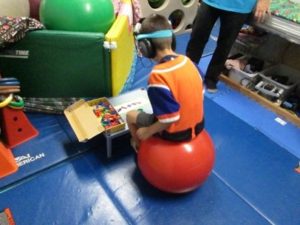
Increasing the challenge to enhance further development of motor, or visual, or body awareness skills as needed:
To avoid confusion, you will want to add one obstacle at a time. For example, to enhance development of visual perception with motor skills, try laying out a line of toys for your child to gather, one at a time while using the hop ball. Our child hopped to retrieve one piece of clothing at a time until enough clothing parts had been collected to dress a beanie baby.
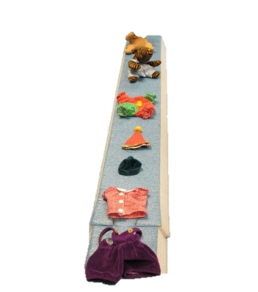
For an older child, laying out pieces of an assembly toy with a few parts to be selected at one time, and then hopping back to the starting point for assembly, once all the parts have been gathered.
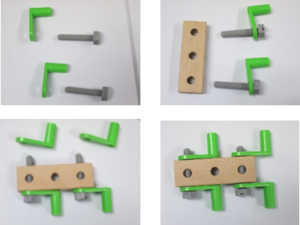
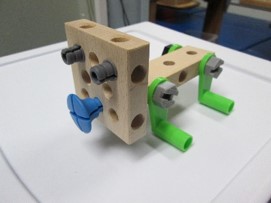
Another option to try when using the hop ball activity to enhance integration of motor skills with body awareness, would be to space obstacles in either a vertical or horizontal line so that the child can weave through or hop around the obstacles. Weaving through the obstacles without knocking any over would be a good beginning. Weaving through the obstacles while placing small toys on each obstacle would be a good follow up idea to pursue.

The ability to move through space filled with obstacles, without collisions or falls often represents a developmental skill that is difficult to achieve for children who have sensory processing deficits. However, this type of activity offers sensory preparation for a world of childhood sport activities where self esteem and social skills are learned as well, and is therefore worth working toward.

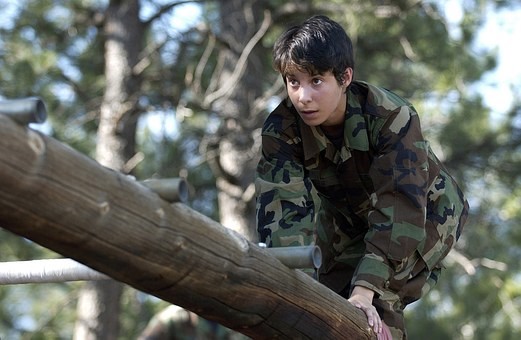
Comments are closed.